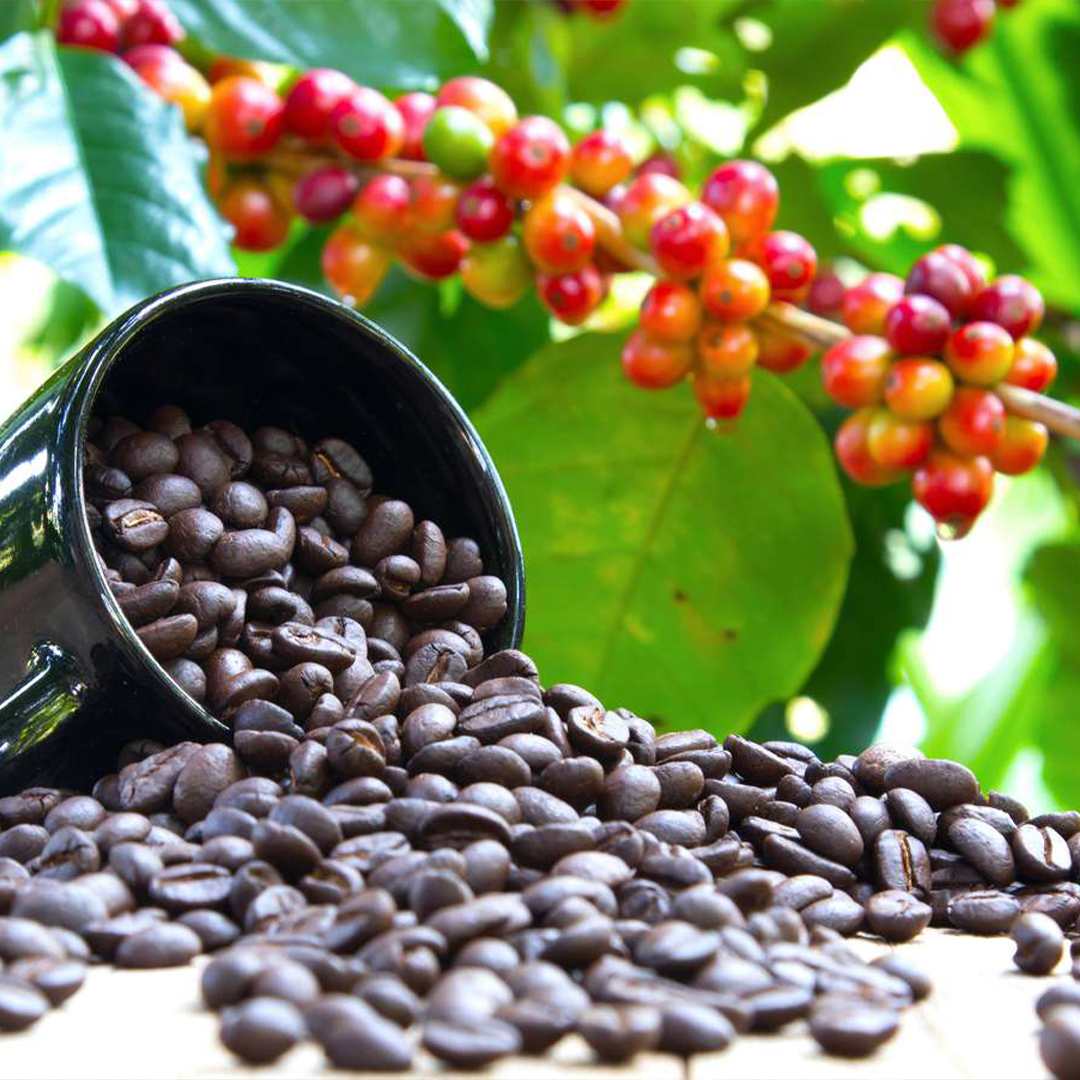Exploring coffee species
Coffee, a cherished beverage worldwide, originates from various plant species, each contributing unique flavours and characteristics to our cups. There are three main species used in coffee: Coffea Arabica, Coffea Canephora (commonly known as Robusta) and Coffea Liberica.
Understanding coffee plant species
In botanical terms, a species is a group of organisms capable of interbreeding and producing fertile offspring, sharing common characteristics. In the coffee world, the genus Coffea encompasses over 100 species, but only a few are cultivated for consumption. The primary species are Coffea arabica, Coffea canephora (Robusta) and Coffea liberica.
At Pablo & Rusty's, we primarily focus on Arabica beans and their hybrids, aligning with our commitment to specialty coffee. While Arabica remains our mainstay, we keep a keen eye on other species and innovations.

Arabica coffee (Coffea arabica)
Accounting for approximately 60–70% of global coffee production, Arabica beans are prized for their smooth, complex flavours and aromatic profiles. Originating from the highlands of Ethiopia, Arabica plants thrive at higher altitudes with cooler climates, typically between 1,000 and 2,000 metres above sea level. Major producing regions include countries in Central and South America like Colombia, Brazil and Guatemala, as well as African nations such as Ethiopia and Kenya.
Arabica beans are delicate and require meticulous cultivation practices. They are more susceptible to pests and diseases and the plants are sensitive to temperature changes. Global warming poses significant challenges to Arabica cultivation. Rising temperatures and unpredictable weather patterns affect the high-altitude regions where Arabica thrives, leading to reduced yields and increased vulnerability to diseases like coffee leaf rust. Farmers are adapting by shifting plantations to higher altitudes and exploring heat-resistant varieties, but these solutions are not universally accessible.

Robusta coffee (Coffea canephora)
Robusta beans constitute about 30–40% of the world's coffee supply. Known for their strong, bitter taste and higher caffeine content, Robusta plants are hardier, resistant to pests and can grow at lower altitudes and higher temperatures. Major producing countries include Vietnam, Brazil, Indonesia and parts of Africa like Uganda and Côte d'Ivoire.
In Brazil, Robusta coffee is often referred to as Conilon (note: technically both Robusta and Conilon are sub species of Coffea Canephore). The state of Espírito Santo is a significant producer of Conilon, contributing substantially to Brazil's coffee output. Conilon beans are essential to Brazil's domestic coffee market and are increasingly recognised for their quality improvements in recent years.
Robusta's resilience makes it a staple in instant coffee and non-specialty espresso blends, where its robust flavour and crema-enhancing properties are valued. While traditionally considered inferior to Arabica in terms of flavour complexity, high-quality Robusta beans are gaining attention in the specialty coffee scene, prompting a re-evaluation of this robust species.

Liberica coffee (Coffea liberica)
Liberica coffee is less common, comprising a small fraction of global production. Native to Western and Central Africa, Liberica beans are larger and more irregular in shape. The flavour profile is distinctive, often described as woody or smoky, with a full body. Liberica thrives in specific climates and is predominantly grown in Malaysia, the Philippines and Indonesia.
The unique taste of Liberica appeals to niche markets, particularly in parts of Southeast Asia where it's integral to local coffee cultures. Its rarity and bold flavour make it a sought-after variety for some coffee enthusiasts.
Heirloom varieties and the story of geisha coffee
In coffee terminology, "heirloom" refers to traditional varieties that have been cultivated and passed down through generations without genetic modification. These varieties often exhibit unique flavour profiles and are integral to the cultural heritage of coffee-growing regions.
A prime example is the Geisha (or Gesha) coffee variety. Originally discovered in the Gesha village of Ethiopia, this heirloom variety was brought to Panama in the 1960s. For decades, it remained relatively obscure until its exceptional quality was recognised in the early 2000s. Geisha coffee is renowned for its delicate body and unique flavours.
The rise of Geisha coffee showcases how an heirloom species can become widely cultivated and prized globally. Its success has spurred interest in other heirloom varieties, encouraging farmers and roasters to explore the untapped potential of traditional coffee genetics. Keen to try a geisha coffee and understand what makes it special? Check out our Expedition Program.
The role of hybrids and cultivars
To enhance disease resistance, yield and adaptability, coffee researchers and farmers develop hybrids and cultivars. Hybrids result from crossbreeding two different species or varieties, combining desirable traits from both parents. Cultivars are cultivated varieties selected for specific characteristics and propagated through cloning or selective breeding.
An example is the Timor Hybrid, a natural cross between Arabica and Robusta, combining Arabica's flavour with Robusta's resilience. At Pablo & Rusty's, we appreciate these hybrids for their ability to deliver high-quality flavours while offering farmers more sustainable crop options.

Lab-Created varieties: SL-28 and others
Advancements in agricultural science have led to the development of lab-created coffee varieties designed to possess specific traits, such as enhanced disease resistance or improved flavour profiles. SL-28, developed in Kenya during the 1930s by Scott Laboratories, is a notable example. This variety was created to produce high yields in drought conditions while maintaining excellent cup quality. SL-28 is celebrated for its sweet, citric acidity and is a favourite among specialty coffee roasters.
Another example is the Catimor variety, a cross between Timor Hybrid and Caturra, engineered for disease resistance and high yield. While some lab-created varieties were initially met with scepticism due to concerns over flavour, ongoing developments have led to hybrids that satisfy both the farmers' needs for resilience and the consumers' desire for quality.
Challenges facing Arabica due to climate change
Climate change presents significant threats to Arabica coffee cultivation. Increased temperatures, altered rainfall patterns and the proliferation of pests and diseases are reducing suitable growing areas. A study by the International Center for Tropical Agriculture predicts that by 2050, up to 50% of the land currently used for coffee production may become unsuitable.
These challenges are prompting the industry to invest in research for more resilient coffee plants. This includes developing new hybrids and cultivars that can withstand higher temperatures and resist diseases. At Pablo & Rusty's, we support sustainable farming practices and innovation to help mitigate these challenges, ensuring the future of quality coffee as well as our habitats around the world (Read more here).

Conclusion
The world of coffee is rich and diverse, shaped by various species, heirloom varieties, hybrids, and cultivated subspecies. Each contributes to the complex flavours and aromas that coffee enthusiasts cherish.
By understanding these distinctions, we can better appreciate the journey from bean to cup and the intricate factors that influence the coffee we enjoy daily. Whether savouring a cup of heirloom Geisha or enjoying a well-crafted specialty flat white, each sip tells a story of botanical diversity and human ingenuity in the face of global challenges.




